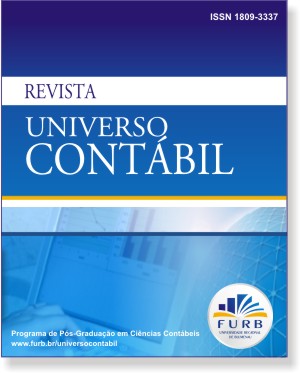AN ACCOUNTING REGULATION ANALYSIS THROUGH THE LENS OF MIGUEL REALE’S TRIDIMENSIONAL THEORY OF LAW
DOI:
https://doi.org/10.4270/ruc.20106Keywords:
Regulation, Tridimensional Theory, Fact. Rule, Value.Abstract
One of the most relevant challenges that accounting community (regulators, academics, prepares e auditors of financial reports) faces nowadays is regarding the design of accounting standards, in order to provide a faithful representation of a company's economic and financial position to stakeholders. In this context, accounting regulation is crucial on professionals' skills improvement and on shaping accounting practices to meet the stakeholders expectations related to the quantity and the quality of the accounting information. This is the most relevant reason for the actual process of changes on the Brazilian Financial Reporting Standards. Those changes include: the creation of Comitê de Pronunciamentos Contábeis (CPC, the Brazilian Financial Accounting Standards Board), the edition of the Laws n° 11.638/07 and 11.941/09, and of a set of accounting standards by the Comissão de Valores Mobiliários (CVM, the Brazilian Securities & Exchange Commission). While an interdisciplinary theoretical proposition, this paper suggests that Miguel Reale's Tridimensional Theory of Law is helpful in understanding the financial accounting regulation process. According to Reale, the rule (law) is a consequence of the dialectic relationship among fact, value and rule, through the intervention of an entity with authority (power). Financial and economic fact (and events) that affect a company's performance are analyzed by an entity with authority (CPC for instance) based on the values shared by the society (e.g., comprehensiveness, relevance, confidence, comparability), and from there rules (accounting standards) are developed.
Downloads
Downloads
Published
How to Cite
Issue
Section
License
The copyright for papers published in this journal belong to the author, with rights of first publication for the journal. As the papers appears in this publicly accessed journal, the papers are for free use, receiving their credit, in educational and non-commercial uses. The journal will allow the use of the papers published for non-commercial purposes, including the right to send the paper to publicly accessed databases.


